In my Peninsula adventures, there’s been one place I’ve often passed by but never stopped to investigate. This place is Pukehiki, a small group of buildings huddled at the junction between the road to Sandymount and the road to Larnach’s Camp estate. A few emails later I was all set to meet community trust member Maarten, who would give me access to the two main historic buildings here – the church and the hall.
The day I chose was dull and drizzly, and as I climbed up into the fog on Highcliff Road I wasn’t sure I was even going to be able to see the buildings. I parked near the junction and greeted my guide, who lead me quickly around the macrocarpa hedge to the church gate.

Otago Peninsula back when the first settlers arrived was far from the grassy, cultivated, sheep-dotted day trip we know today. The steep hills were clad in thick primordial forest, with only the most rudimentary tracks yet cut. Transport to and from the main city was by boat via Port Chalmers. The residents were cut off from many of the services they’d have had access to in their home countries, and that included services of the religious type. At first the Port Chalmers minister had to be rowed across the channel for services, but this was a dangerous prospect and at one point the man was almost drowned in the rough harbour seas.
In 1867 a group of Peninsula settlers came together and decided to build a church, despite the lack of allocated minister – a sort of reverse if-you-build-it-they-will-come strategy.
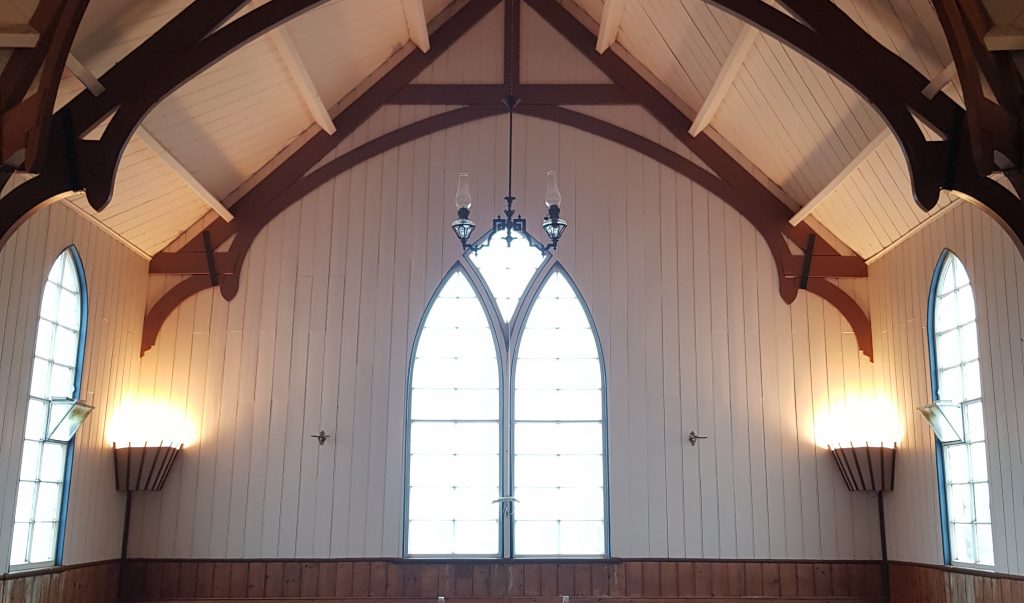
It might seem odd that a place of worship should take precedence over utilitarian things such as roads or even real subsistence living – Walter Riddell, the man who built the church, makes it clear in his journal that he was struggling just to support his family – but in our settlers’ culture the church was central to the community – not just a place of worship but a place to come together for births, deaths or marriages, and a place for general socialising. Wilhelmina Riddell, Walter’s wife, kept a journal of their voyage to Dunedin, and often commented on what her old congregation would be doing and how much she missed it.
Walter and Wilhelmina Riddell arrived on the Peninsula in 1864, having purchased land at Peggys Hill (they would eventually rent out part of it for lime burning). Walter was a carpenter whose skills were much in demand by his neighbours, including James Richie Rutherford who required a “little coffin” for his 17-month-old son, and William Larnach who hired him for a great deal of work on his famous castle and estate.
He was present at the meeting at which the church was conceived, and made very little from the long days he put into the job – sometimes 20 hours a day along with the business of getting his small farm on its feet. The roof was blown off in a storm and he got the new one on just in time to celebrate New Years Day 1868 at John Mathieson’s Springfield farm – a rare day off for which he scolded himself for “dancing & making fools of ourselves”. Both he and Wilhelmina were very serious and very pious Presbyterians.
You can get an idea of how seriously Pesbyterians tended to take things from the remnants of white paint still apparent on the lower portions of the church windows – there to blot out any handy distractions for wandering minds.
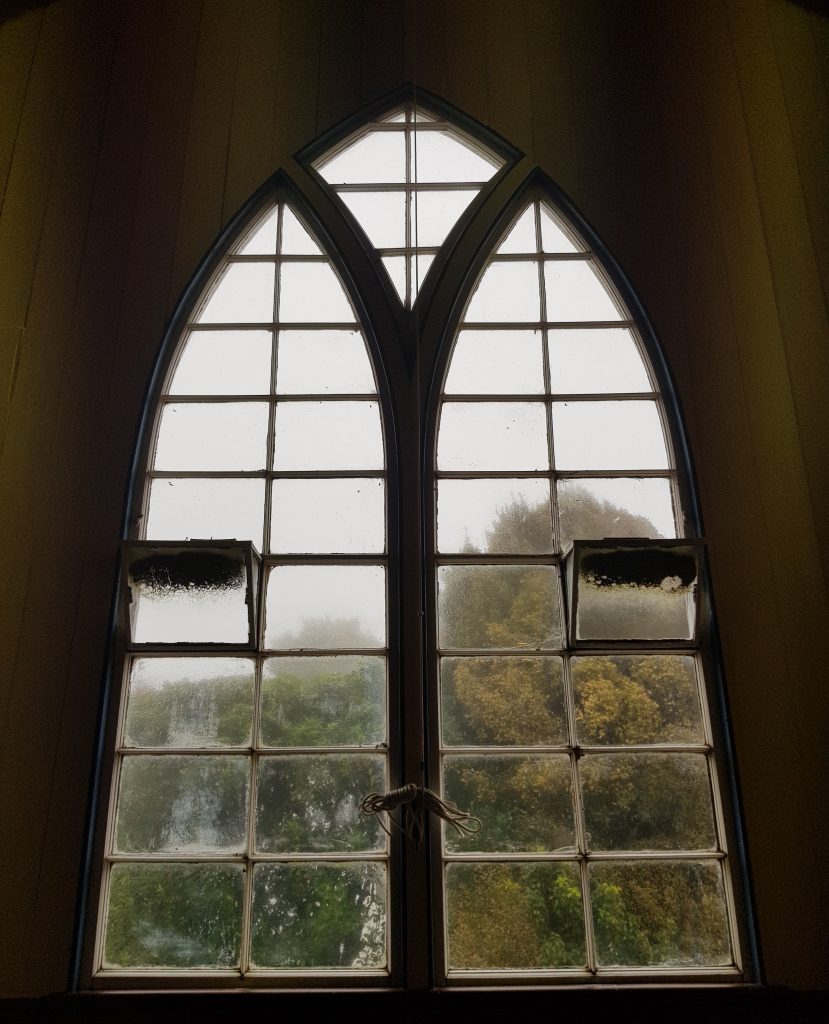
Walter completed the church, including many of the furnishings, in March of 1868.
It seemed, in this case, that divine providence was willing to supply what the settlers sought. Alexander Grieg, orphaned from a young age, had in spite of his hardships graduated from seminary in Edinburgh. He was encouraged to take up ministry in China, but at the last moment was advised not to upon account of his eyesight, and so was shipped to Otago instead – though by his own admission he was barely aware such a place existed. It was expected that he should become attendant and successor to Dr Burns, however due to the sluggish nature of communication between Dunedin and Scotland, his proposed position had already been filled by the time he arrived.
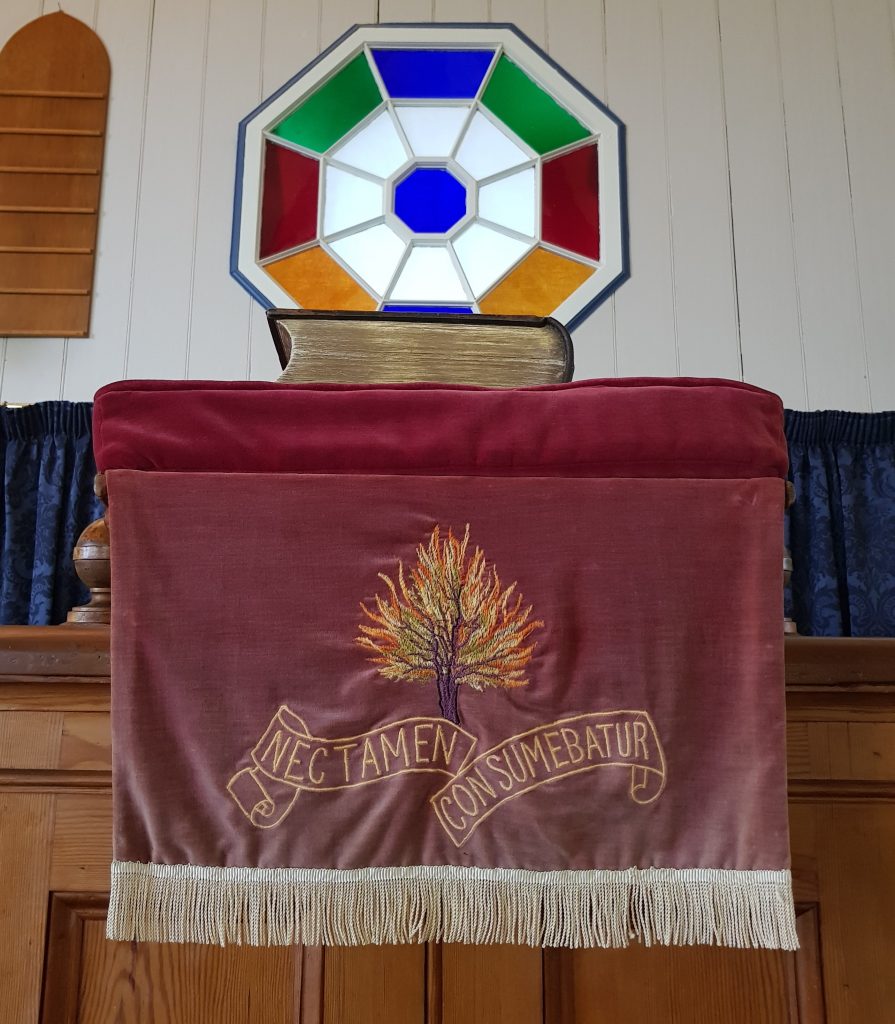
Thus he was sent to the vacant Peninsula – and this match made by chance could hardly have been surpassed by one of design. He connected instantly with the rural people and the landscape and laboured ceaselessly in this parish for 34 years. He never sought a more prestigious posting, though doubtless he could have had one if he so desired. He was a famous figure riding the early roads in his frock coat and top hat, tails pinned up so as to escape the mud, and visiting anyone who did not appear at his services. He retired in 1904 but lived to 99 and was one of the oldest clergymen in the country by that time.
There were ministers after him as the fortunes of the Peninsula ebbed and flowed – though none held the position as long as he. Farms were consolidated but holiday homes increased. In 1992 the Presbyterian Church decided to sell the building, but a grass-roots movement in the local community campaigned to have it retained in their care. So it was that the church was sold to the Pukehiki Community for the princely sum of ten cents. It is now maintained by a trust, but they have some hard work ahead of them as the building is sorely in need of restorative work. As we stepped back through the threshold beneath the bell tower – added in 1881 along with two wings – Maarten told me that they were no longer able to ring the bell due to the poor condition of the wooden tower. The work to preserve this building may end up costing as much as $500,000, a lot for a small community to raise!
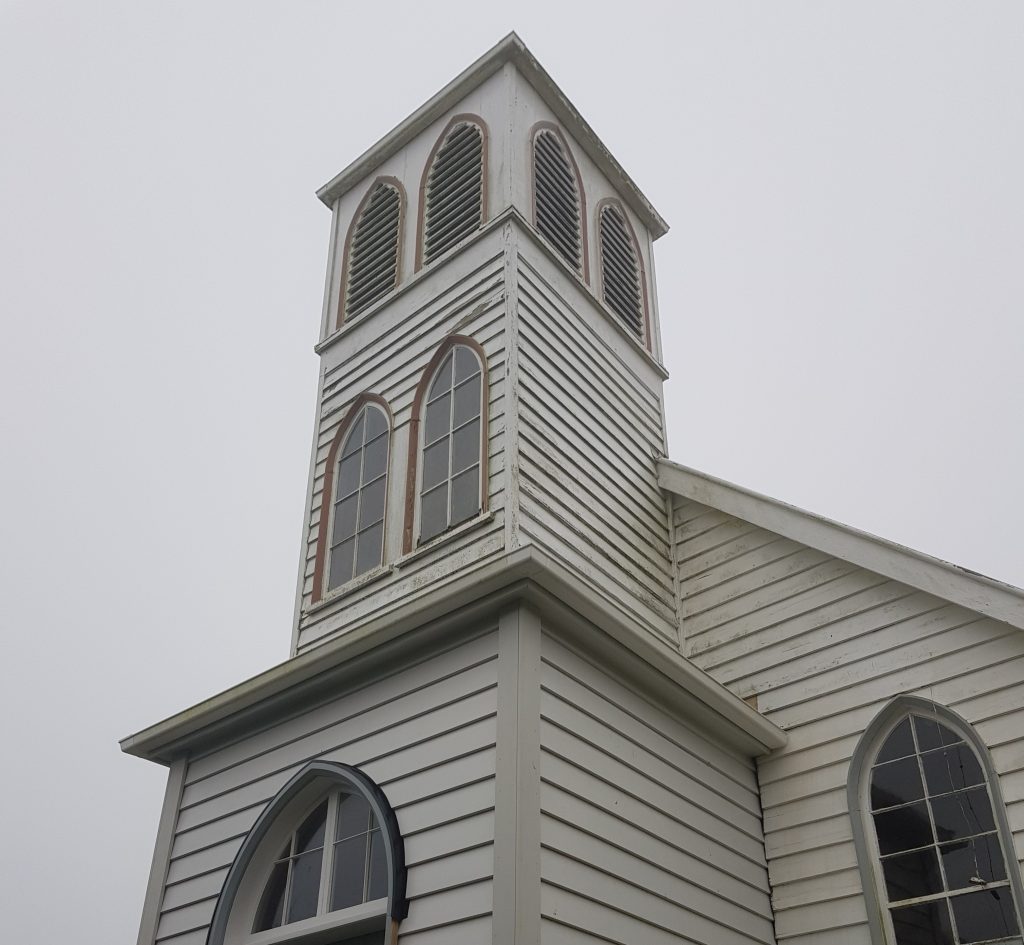
While I was here, Maarten also offered to show me Pukehiki’s other major historic building, just across the road. Though built as a drill hall in response to fears of imminent Russian invasion, this building is very much associated with the church, as this is where their annual Christmas parties were held. Alexander Greig’s wife, Jane, did a lot of the hard work setting these up, leading the local ladies in decorating the hall with ferns and greenery for the occasion.
Alexander gave much praise to his wife for her support in his work. She spent many nights alone while he visited around the district, and was ready at all times to provide hospitality to their guests. She was well respected for her loyalty, courage and kindness.
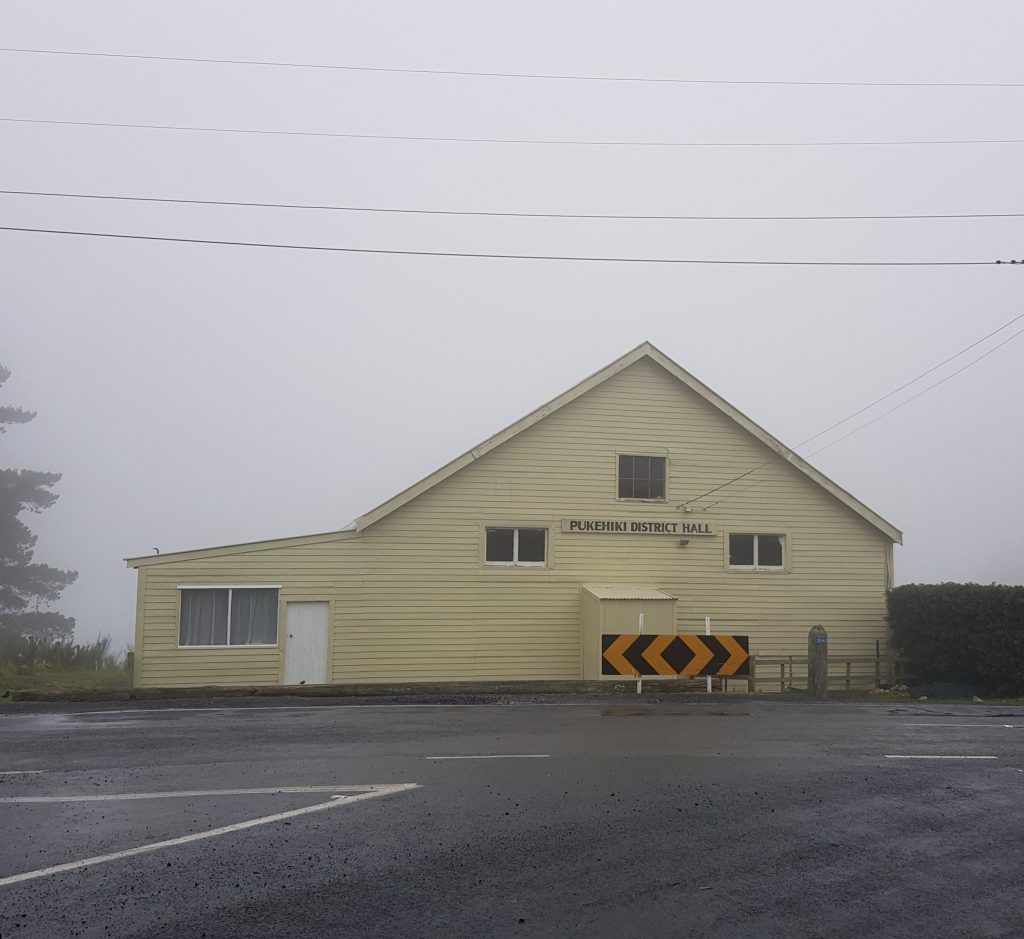
The annual soiree generally involved a visit from Father Christmas, who would hand out gifts and lollies to the young boys and girls of the district. He of course favoured those who attended the Sabbath School, and thereafter those who had paid the requisite entry fee.
The stage played host not only to a magnificent Christmas tree laden with oranges, toys and lollies, but to the vast and varied talent of the community. Walter Riddell sang, his daughter lead a choir, and others played instruments.

Nowadays the hall hosts events such as wedding receptions and an annual hoe-down dance – all the earnings go back into maintenance of the building.
The library is third historic building at the Pukehiki junction – restored from a semi-ruinous state to a picturesque and cosy little cottage complete with rustic dry stone wall and white picket gate.
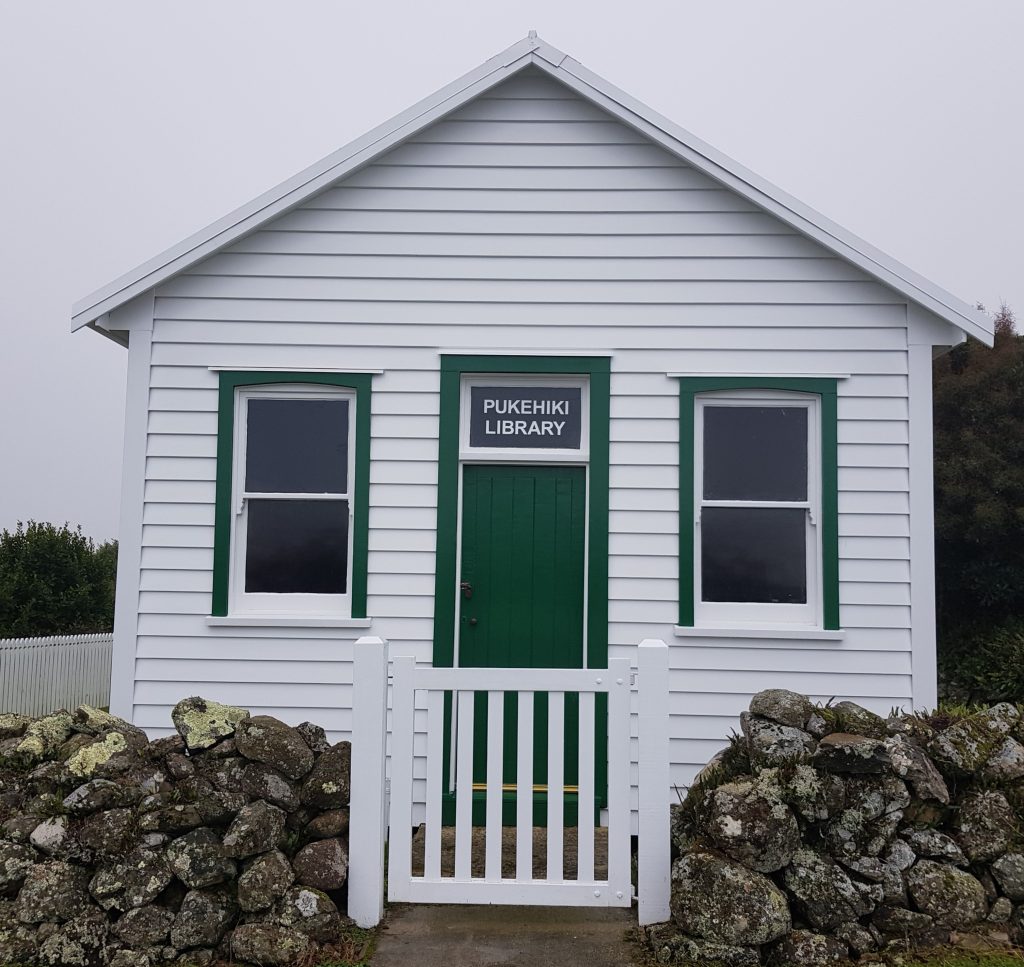
Walter Riddell, in addition to building the church, had a long and distinguished career as its elder and leader in song. Back in those days musical accompaniment was rather contentious, and the first organ had to be carefully introduced. Before that, it was voice only.
Walter went door-knocking around the district in 1869 to gather signatures on a petition to the Government to provide the district with a secular school. Efficient as ever, he also took the opportunity to collect subscriptions for a library to be associated with the church Sabbath School. Once the required number of subscriptions were accrued, he sent away to Glasgow for the books, which occupied a cupboard in the church until they eventually outgrew it.
In 1908 the library was built to house the expanding collection. Unfortunately I didn’t get a chance to peek inside today.
And with that, my slightly damp tour of Pukehiki was concluded. I thanked my kind host and departed for warmer climes, carrying with me one more thread in the tapestry of Peninsula History.
References:
Walter Riddells diary, aged 28 years, Sandymount, Otago Peninsula (available at Dunedin Public Library, get the one with the family tree in the front for Wilhelmina’s diary)
OBITUARY Otago Daily Times, Issue 18620, 31 July 1922
Otago Peninsula Presbyterian Church : seventieth anniversary celebrations
Otago Peninsula Presbyterian Parish; centennial history by Reginald Robert Seaton
A PRESBYTERIAN PATRIARCH Evening Star, Issue 21536, 7 October 1933
Trust faces big repair bill for heritage church By David Loughrey
THE OTAGO DAILY TIMES MONDAY, JANUARY 4, 1892. Otago Daily Times, Issue 9314, 4 January 1892
SCHOOL VACATIONS. Otago Witness, Issue 2079, 28 December 1893




A wonderful and descriptive account of the early days of Pukehiki, particularly from Walter Riddell’s and Alexander Grieg’s perspectives. This account of Pukehiki’s history is a gem that should be kept for posterity!
Thanks for your work on this site